Barn managers across the nation are gearing up for the winter by gathering and storing the last of the season’s hay yield. After reading several recent articles on barn fires as a result of spontaneously exploding hay bales, I thought I’d recommend another hay storage option from a planning (and horse health and safety) perspective.
Barns are often portrayed in art and media with prominent, overflowing haylofts. And why not?! They make for convenient, easy-access storage. There are countless pop-culture depictions of haylofts as hiding places, romantic destinations, and play areas (I spent a good bit of childhood playing in haylofts, to be honest!) And though these images are mostly innocuous, they, unfortunately, reinforce the idea that this space is the “of course ”option for hay stockpiling. Historically, hay has almost always been stored in the barn, but as hay curing and combustion research further developed, it became evident that these traditional storage methods were contributing to unsafe conditions for the barn inhabitants and the structures themselves. The popularized image of haylofts did not keep up with the findings. I have long argued that haylofts in barns should be avoided. As convenient as they may be, there are better options to safely store bulk hay.
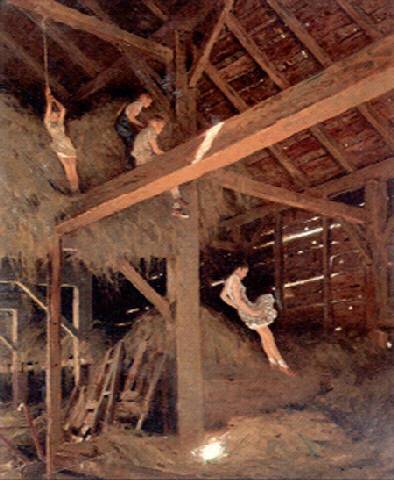
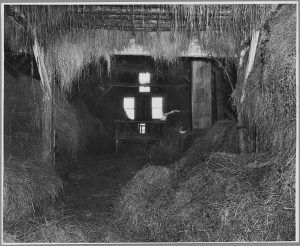
Recent articles in both the Paulick Report and The Horse have excellent, detailed information about the hows and whys of spontaneous hay combustion and how to quell the effects of improperly cured hay. Eye-opening reads for sure, but I must stress the benefit of alternative bulk hay storage as an additional preventative measure.
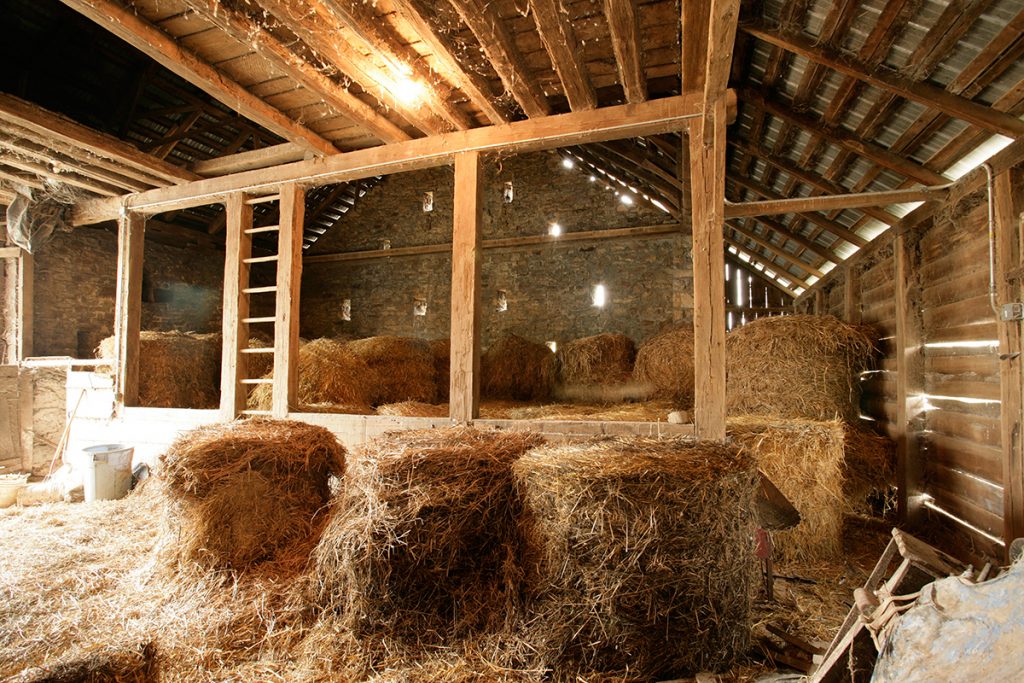
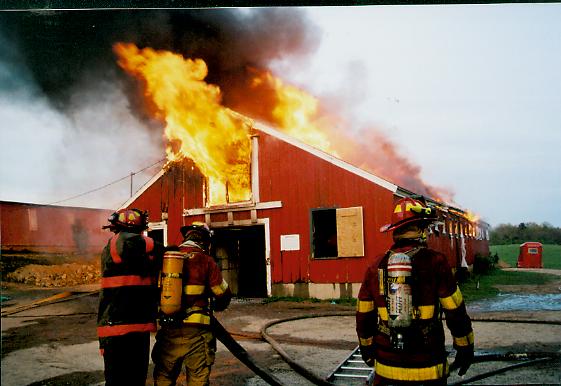
We typically recommend bulk hay to be stored in a separate hay-barn altogether. Ideally, this structure would be at least 100 ft. away from the main barn. With proper planning, this method can also contribute to efficient farm circulation by establishing pathways that do not obstruct main throughways and drive unnecessary noise and commotion out of sight and earshot of nervous equines – another safety factor to think about. Driveway access and asphalt surfaces can also be confined to the hay barn area too, eliminating – or at least reducing- asphalt use around the main barn, which can be uncomfortable footing for horses and, in some parts of the country, potentially dangerous in winter. The added bonus of less installation cost and hassle is also something to consider!
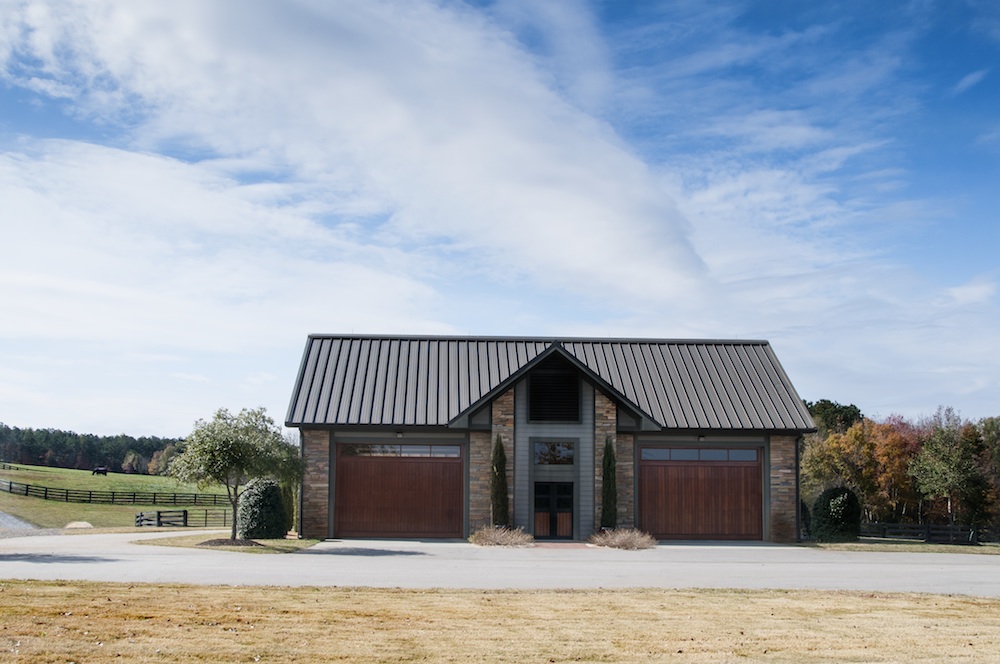
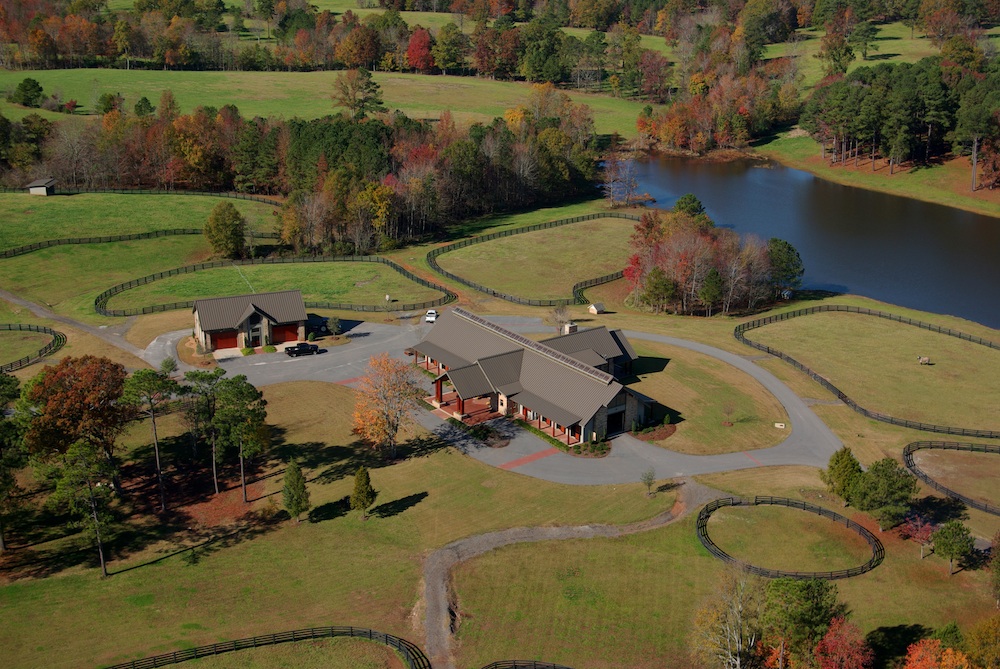
Perhaps you’re now anxiously biting your nails at the thought of having to haul hay from the hay-barn 100 ft. away every single day. We wouldn’t want to do that either! For convenience, we recommend 7-day storage within the main barn, usually as an isolated stall, but arranged in such a way that it is easy to load, convenient for access, open to natural ventilation, sheltered from precipitation, and set upon a moisture-absorbent surface. Though we do not recommend bulk storage within the barn, we understand it’s not always feasible for a barn owner to commission an architect to design a separate storage. In some cases, the owner has simply “always done it that way” and is adamant about continuing to do so. Regardless of budget or insistence, we make it a point to at least create a solid fire and smoke separation between the main stalling area and hay storage. Our first priority is always the horse.
Hopefully the “hayday” of the hayloft is behind us and we can continue to encourage owners to consider relocating their bulk-hay stores. For now, if the barn is hosting 7 days worth of hay or the entire supply, we take every precaution to minimize health and safety risks to your horse.